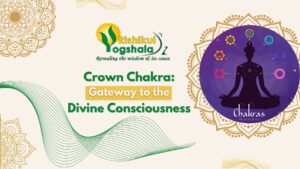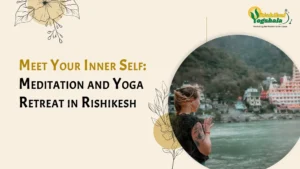Bhramari Pranayama, commonly referred to as Humming Bee Breath, is a meditative breathing technique that calms the nervous system. The name of this pranayama, bhramari, which means “bee” in Sanskrit, comes from the humming sound made while practicing this yoga at the back of the throat. It is similar to the soft humming of a bee which is why this yoga is also called the humming bee breath.
We have broken down the step-by-step actions of performing the Bhramari pranayama along with anecdotes on how it is beneficial to our stressed, stiffened human body.
Oh, remember that there are restrictions too because not everyone should be attempting this pranayama. Pregnant or menstrual women shouldn’t engage in brahmari. Furthermore, it should not be used by anyone who has active epilepsy, chest pain, or severely high blood pressure. The supine practice of bhramari is also not recommended (lying down).
9 Bhramari Pranayama Benefits
Why are people interested in performing the Bhramari pranayam? It is encased in a bunch of positive outcomes that align your body and mind in place.
- Quiets and focuses your thoughts
- Relieves tension in the brain Stimulates the pituitary and pineal glands
- Calms down the nervous system
- Reduces tension and anxiety
- Decreases blood pressure and dissipates rage
- Improves the condition of the throat
- Enhances and strengthens the voice
- Aids in the recovery of body tissues
- Promotes restful slumber

5 Steps of Bhramari Pranayama
Bhramari is best performed on an empty stomach, like the majority of pranayamas. While bhramari can be done at any time of day, it is most effective in the early morning and late at night when there are fewer outside distractions and our internal awareness is at its sharpest.
Select a cozy sitting position. It is best to sit on the floor cross-legged if you can, elevating your hips with a cushion or blanket for comfort. As an alternative, you could decide to place your feet flat on the ground and sit on a chair facing its front To achieve an upright back, neck, and head, let your spine straighten and lengthen. Touch the insides of the upper row of teeth as you gently seal your lips, keeping your teeth slightly apart. Keep your mouth in this posture throughout the practice and check periodically to make sure your jaw is still relaxed.
Now that you have settled in, here’s how to begin doing the Bhramari pranayama:
- Close your ears with your thumbs by pressing on the cartilage between your cheeks and ears.
- Place your index finger in between your eyebrows.
- Now keep your middle, ring, and little fingers on the bridge of your nose.
- These three steps are the settling-down steps for Bhramari pranayama.
- Start by inhaling deeply through your nose for as long as you can. Remember to breathe through your abdomen.
While exhaling, drop your chin to your chest and hum steadily from the back of your throat.
Ensure that the sound is steady, mellow, and smooth. The tongue’s position behind the upper row of your teeth enables the vibration to more effectively reverberate throughout the skull and impact the brain’s tissues. Bring your focus to the Ajna chakra in the center of your head, keeping your body absolutely motionless while you allow the sound to fill your head.
After you’ve finished exhaling, carefully straighten your neck and begin the process all over again by taking a deep breath through your nose. Continue with seven repetitions or gradually increase by one repeat each week, up to a total of seventeen repetitions. Practicing Bhramari Pranayama step by step can significantly enhance your mindfulness and reduce anxiety, starting with a comfortable seated position and following a sequence of deep, humming exhalations.
Also Read :- Pranayama: A Simple Guide to Cleansing Your Body and Mind
Here’s What You Should Not Do

Here are some additional Bhramari pranayama safety measures to follow in order to prevent any negative consequences:
- Grasp the tragus cartilage with your thumb. Don’t put it in your ear.
- Do not apply excessive pressure with your thumb.
- When performing Bhramari Pranayam, you should do so at least four to five hours after eating or on an empty stomach.
- Pranayama should be practiced in the early morning, ideally before sunrise.
- Make sure to maintain light pressure on your lips when doing Bhramari Pranayama. You should keep your mouth shut throughout the pranayama.
- Take a break and breathe deeply if you get fatigued while performing the asana before moving on to the next round.
- Do not attempt this pranayama if you have an ear infection.
Conclusion
Allow your breath to settle after the final exhalation, and check for signs that something has changed in the way you feel things. What are your current bodily, mental, emotional, and spiritual health? What changes in energy have you noticed as a result of this technique? Where in your body do you feel sensation, and how has it changed since you first started?
When you’re ready, slowly open your eyes while maintaining your focus on such changes. If it is morning, slowly get up and give the rest of your day your entire focus; if it is evening, take note of the vibrational peace this technique has brought about in your body and attempt to keep it as you get ready to go to bed.
Also Read – How To Do Kapalbhati Pranayama And What Are Its Benefits
The above guidelines are intended to give you a secure and comprehensive introduction to the practice of Bhramari. Advanced practitioners occasionally use additional modifications such as muscle locks (bandhas), breath retention (khumbaka), and humming while inhaling, similar to ujjayi pranayama. The best way to learn these extra methods is in person from an experienced instructor.
Rishikul Yogshala Rishikesh offers an excellent opportunity to immerse yourself in yoga with their 200 Hour Yoga Teacher Training in Rishikesh. Set in the foothills of the Himalayas, this program allows you to learn, apply, and share your yoga knowledge in a natural and serene environment. Additionally, explore their other offerings like 100 Hour Yoga Teacher Training in Rishikesh, 300 Hour Yoga Teacher Training in Rishikesh, and 500 Hour Yoga Teacher Training Rishikesh, where you can delve into practices like Bhramari pranayama, Ashtanga yoga, and more!















